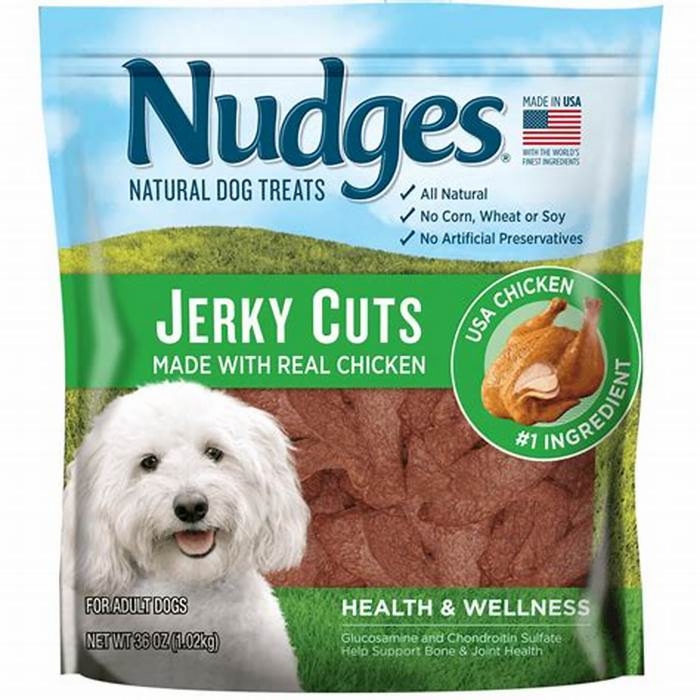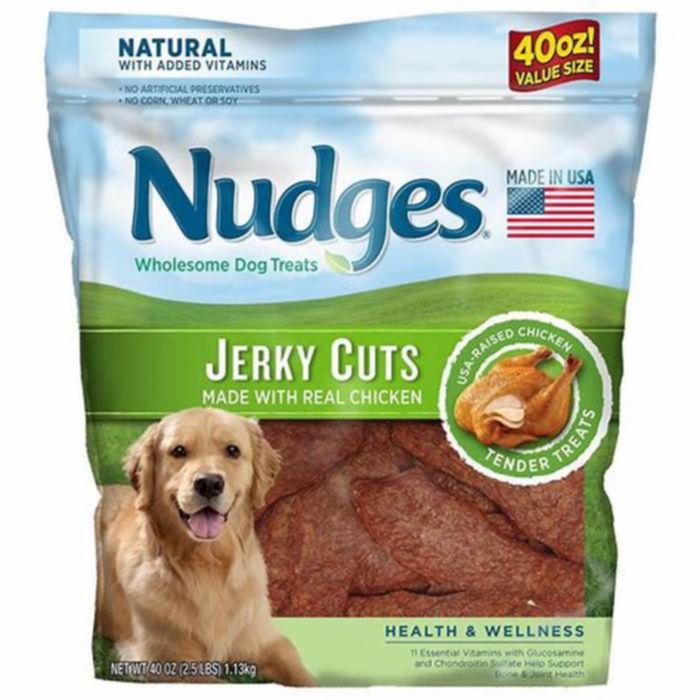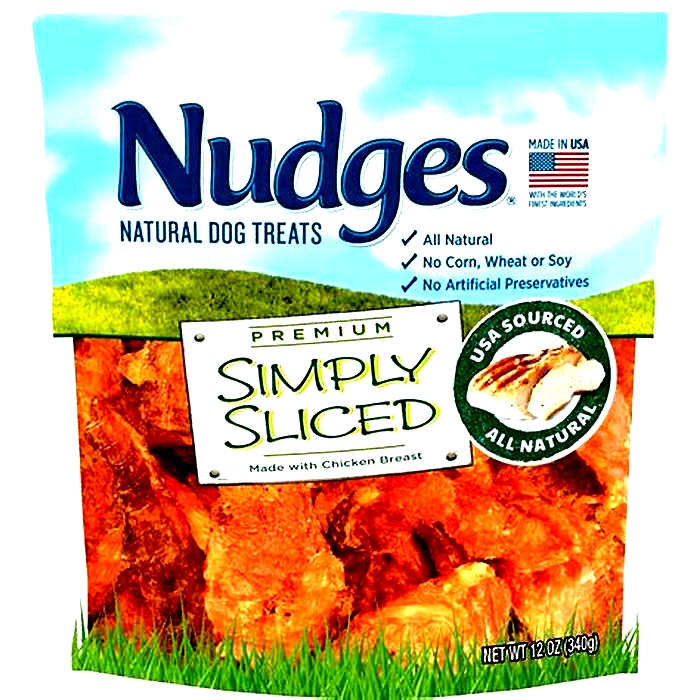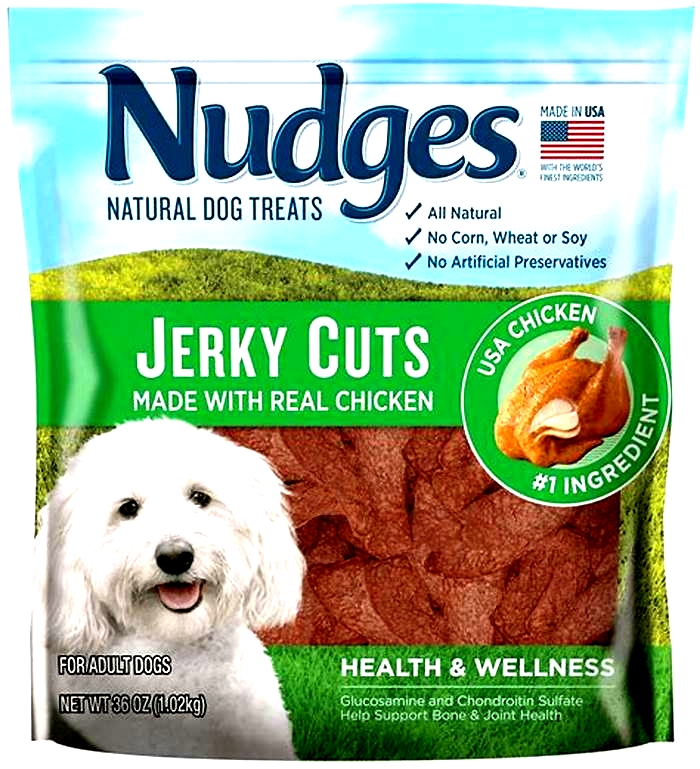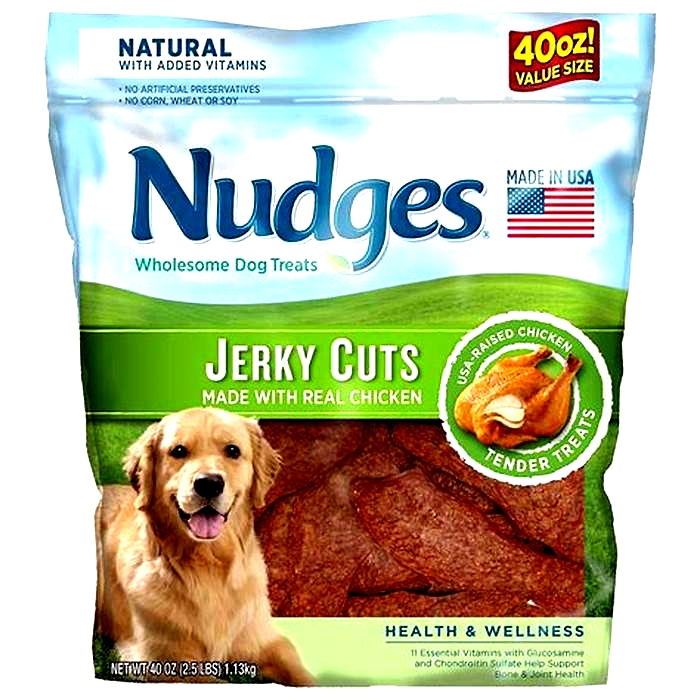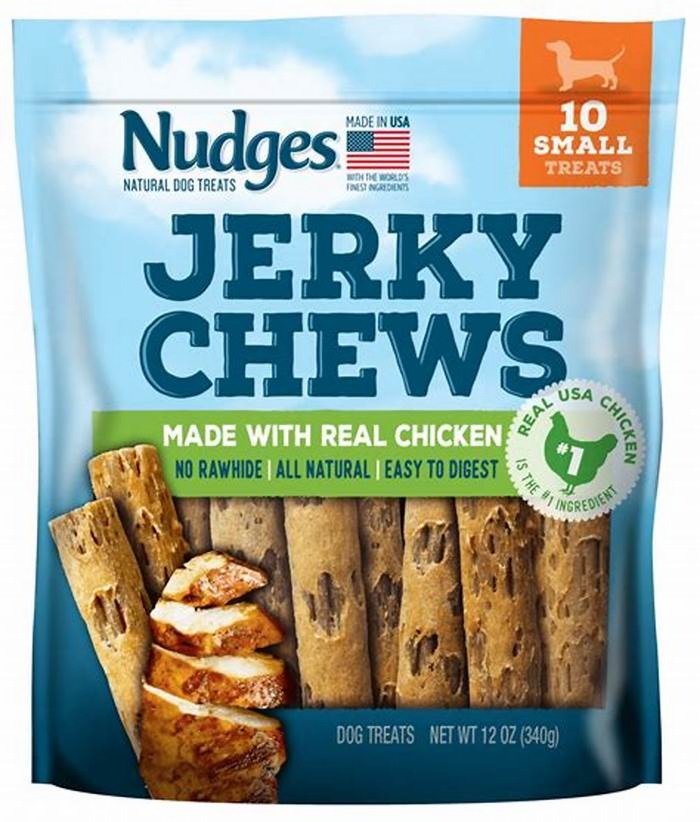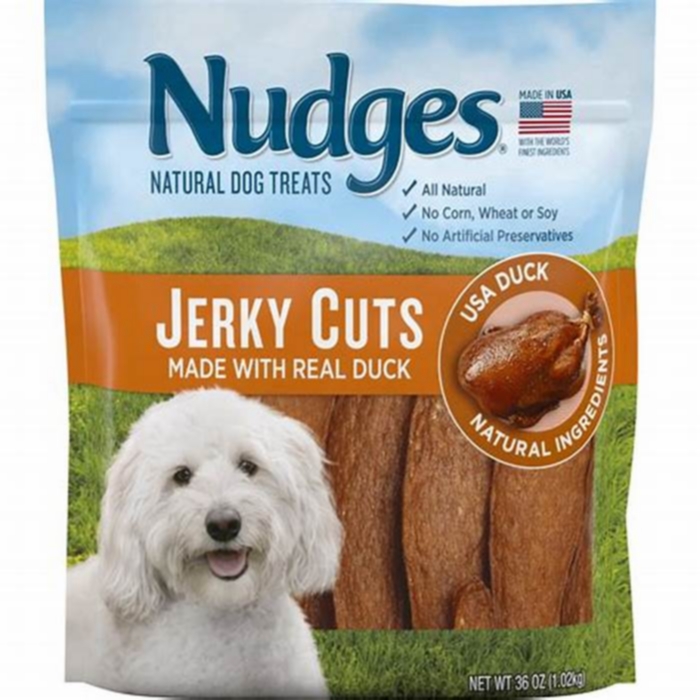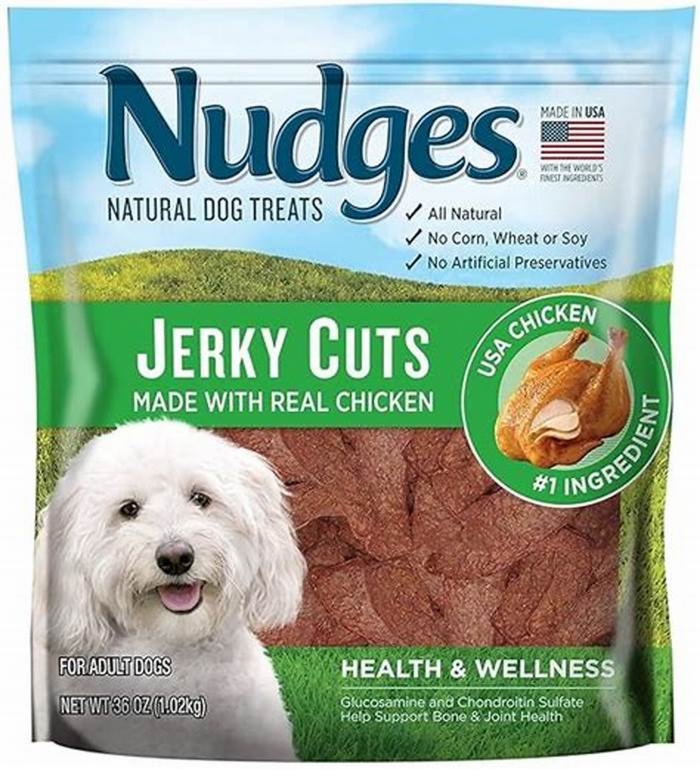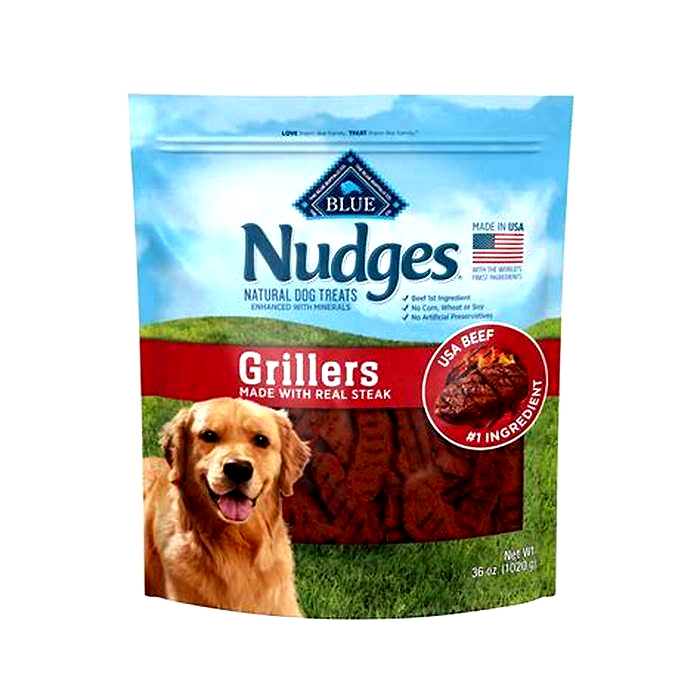how long do nudges dog treats last
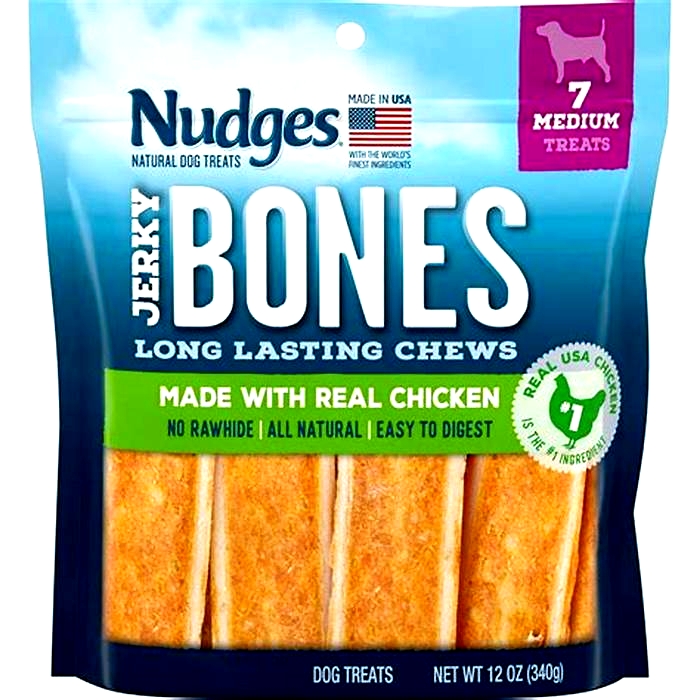
How Long do Homemade Dog Treats Last? Essential Storage Guide
If youre a dog owner who loves to make homemade treats for your furry friend, its important to know how long they can last and how to store them properly. Homemade dog treats can be a healthy and tasty alternative to store-bought treats, but they can also spoil if not stored correctly.
In this article, we will explore the shelf life of homemade dog treats and provide essential storage tips to keep them fresh and safe for your furry friend. Lets dive in!
Understanding Homemade Dog Treat Shelf Life
When you make homemade dog treats, its essential to know how long they will last before they go bad. Most homemade dog treats can last for up to two weeks when stored properly. However, some treats can last for up to a month or more, depending on the ingredients and storage conditions.
The typical expiration date for homemade dog treats is around two weeks. However, several factors can affect their shelf life. These factors include the ingredients used, the storage conditions, and how well theyre sealed.
Its important to keep in mind that homemade dog treats dont have preservatives like commercial dog treats do. Therefore, you should always make sure theyre fresh and safe for your furry friend to consume.
Factors that Affect Homemade Dog Treat Shelf Life
The shelf life of homemade dog treats can vary depending on several factors. Here are some of the things that can impact how long your treats will last:
- Ingredients: The ingredients used to make homemade dog treats can affect their shelf life. For example, treats made with fresh ingredients like meat or cheese may not last as long as those made with dry ingredients.
- Storage Conditions: Proper storage is essential for maintaining the freshness of homemade dog treats. Exposure to heat and moisture can speed up the spoilage process, so its important to keep treats in a dry, cool place.
- Type of Treat: Different types of homemade dog treats may have varying shelf lives. For example, biscuits and jerky treats may last longer than soft or moist treats.
- Preservatives: Some homemade dog treat recipes call for preservatives like citric acid or vitamin E. These can help extend the shelf life of your treats and should be used as directed.
By understanding the factors that can affect the shelf life of homemade dog treats, you can take steps to maximize their freshness and ensure that your furry friend is always getting the best.
Best Practices for Storing Homemade Dog Treats
Proper storage is crucial to maintain the freshness and quality of homemade dog treats. Here are some best practices to follow:
| Tip | Description |
|---|---|
| Use airtight containers | Store homemade dog treats in airtight containers to prevent exposure to air, which can lead to staleness and spoilage. |
| Avoid plastic bags | Avoid storing homemade dog treats in plastic bags as they can trap moisture, leading to mold and spoilage. |
| Store in a cool, dry place | Keep homemade dog treats in a cool, dry place away from direct sunlight and heat sources to avoid spoilage. |
| Label and date | Label each container with the treats name and date of preparation to keep track of its freshness. |
By following these best practices, you can extend the shelf life of your homemade dog treats and ensure their freshness and quality for your furry friend.
Recommended Containers for Homemade Dog Treats
When it comes to storing homemade dog treats, using the right container can make a significant difference in extending their shelf life. Here are some recommended options:
| Container Type | Advantages |
|---|---|
| Airtight containers | Prevent air exposure, keeping treats fresh for longer periods |
| Plastic bags | Easy to seal and store, ideal for soft treats or training treats |
| Glass jars | Durable and easy to clean, preserve freshness and keep treats visible |
Make sure to label the container with the type of treat and the date of creation to keep track of their freshness. Additionally, avoid using containers that have previously held human food or chemicals to prevent contamination.
Avoiding Exposure to Moisture and Heat
Moisture and heat are the enemies of homemade dog treats. Exposure to these elements can cause spoilage and reduce the shelf life of your pets favorite snacks. To prevent spoilage, its crucial to keep the treats dry and away from heat sources such as radiators, ovens, or direct sunlight.
If you live in a humid environment, its best to store the treats in a cool and dry place such as the pantry or a kitchen cabinet. Avoid storing them in the fridge as the condensation can make them soggy and spoil faster.
When storing homemade dog treats, you can also use airtight containers or zip-lock bags to keep the moisture out. If youre using a container, make sure it has a tight-fitting lid to prevent air from getting inside. For zip-lock bags, make sure to press out all the air before sealing them.
Remember to check the container or bag for any holes or cracks that can let moisture in. If you notice any damage, transfer the treats to a new container or bag.
Regularly Inspecting Homemade Dog Treats
In order to maintain the freshness and quality of homemade dog treats, its important to regularly inspect them for any signs of spoilage or expiration. Even with proper storage, treats can still go bad over time, especially if they have been kept for an extended period.
When inspecting homemade dog treats, look for any changes in color, texture, or smell. If the treats have become discolored, moldy, or have a foul odor, its best to dispose of them immediately. Treats that have become too hard or brittle may also be an indication that they are stale and no longer safe for your pet to consume.
By regularly inspecting homemade dog treats, you can help ensure the safety and well-being of your pet. Dont take any chances with expired or spoiled treats always err on the side of caution and dispose of any treats that show signs of going bad.

Properly Sealing Homemade Dog Treats
Properly sealing homemade dog treats is crucial for maintaining their freshness and preventing spoilage. Here are some useful tips to effectively seal your homemade dog treats:
- Use airtight containers that are specifically designed for food storage. Mason jars, plastic containers with lockable lids, and zip-lock bags are great options.
- Ensure that the containers are clean and dry before placing the treats inside.
- Remove excess air from the container before sealing. This can be done by using a vacuum sealer or by manually pressing down on the treats and sealing the container tightly.
- Label the container with the date the treats were made and the expiration date to keep track of their freshness.
Remember to store the sealed containers in a cool, dry place away from any sources of heat or moisture to further extend the shelf life of your homemade dog treats.
Homemade Dog Treat Recipes with Longer Shelf Life
If you want to ensure that your homemade dog treats last longer, certain ingredients can help preserve their freshness and extend their shelf life. Here are some homemade dog treat recipes that have a longer shelf life compared to others:
| Recipe | Ingredients |
|---|---|
| Peanut Butter and Banana Treats | 1 ripe banana, 1 cup oat flour, 1/2 cup unsweetened applesauce, 1/4 cup peanut butter |
| Sweet Potato Chews | 1 large sweet potato, 1 tablespoon coconut oil, 1/2 teaspoon cinnamon |
| Chicken Jerky | 2 boneless, skinless chicken breasts, 1/4 cup low-sodium soy sauce, 1/4 cup honey |
Using these recipes can help ensure that your homemade dog treats have a longer shelf life. However, its still important to store them properly and inspect them regularly to ensure that they havent gone bad.
Signs of Spoiled Homemade Dog Treats
It is essential for pet owners to recognize the signs that their homemade dog treats have gone bad. Feeding your furry friend spoiled or expired treats can lead to adverse health effects, ranging from vomiting to diarrhea and more severe conditions.
The following are some signs to look out for to identify spoiled homemade dog treats:
- Mold growth: If you notice any signs of mold on the treat, discard it immediately. Mold can be harmful to dogs and can cause various health issues.
- Unpleasant odor: If the treats have a rancid or sour smell, its an indication that they have gone bad and should not be fed to your dog.
- Texture changes: If the treats have changed texture, becoming hard or soft, its a sign that they have lost their freshness and should not be fed to your dog.
- Discoloration: If the treats have changed color, developed dark spots, or have a slimy film on them, they have gone bad and should be discarded.
Its crucial to regularly inspect your homemade dog treats for these signs of spoilage. Discard any treats that show any of these signs and prepare a fresh batch for your furry friend.
Conclusion
Proper storage is crucial to ensure the longevity and safety of homemade dog treats. By following the guidelines outlined in this article, pet owners can extend the shelf life of their furry friends favorite snacks and maintain their quality.
Some key takeaways include understanding the typical expiration date of homemade dog treats, identifying factors that can affect their shelf life, and using the right containers for storage. Its also important to avoid exposure to moisture and heat, regularly inspect treats for signs of spoilage or expiration, and properly seal them for optimal storage.
For those looking for homemade dog treat recipes with a longer shelf life, options include using preservatives such as vinegar or honey or incorporating ingredients like oats, sweet potatoes, and carrots.
By implementing these best practices for homemade dog treat storage, pet owners can ensure their furry friends are eating safe and fresh treats for longer periods of time.
FAQ
How long do homemade dog treats last?
The shelf life of homemade dog treats can vary depending on various factors such as ingredients and storage conditions. On average, homemade dog treats can last up to 1-2 weeks when stored properly.
What are the best practices for storing homemade dog treats?
To keep homemade dog treats fresh, it is important to store them in an airtight container in a cool, dry place. Avoid exposure to moisture and heat, as these can accelerate spoilage.
How can I extend the freshness of homemade dog treats?
To extend the freshness of homemade dog treats, make sure to properly seal them in airtight containers and store them in a cool, dry place. Regularly inspect the treats for any signs of spoilage.
What are some recommended containers for storing homemade dog treats?
It is recommended to use airtight containers, such as glass jars or plastic containers with tight-fitting lids, to store homemade dog treats. These containers help preserve freshness and prevent spoilage.
How can I identify if homemade dog treats have gone bad?
Signs of spoiled or expired homemade dog treats include a rancid smell, mold growth, or a change in texture or color. If you notice any of these signs, it is best to discard the treats to ensure your pets safety.
Are there any homemade dog treat recipes with a longer shelf life?
Yes, certain homemade dog treats recipes can have a longer shelf life compared to others. Treats that contain ingredients such as oats, honey, or peanut butter tend to have a longer shelf life due to their natural preservative properties.
What is the importance of properly sealing homemade dog treats?
Properly sealing homemade dog treats helps maintain their freshness and prevent exposure to air and moisture, which can lead to spoilage. It is important to use airtight containers or bags to ensure optimal storage.
Can you provide some tips for keeping homemade dog treats fresh?
Along with proper sealing and storage, it is recommended to avoid exposing homemade dog treats to moisture and heat. Regularly inspect the treats for signs of spoilage and follow recipes that utilize ingredients with natural preservative properties.
How can I extend the freshness of homemade dog treats?
To extend the freshness of homemade dog treats, make sure to properly seal them in airtight containers and store them in a cool, dry place. Regularly inspect the treats for any signs of spoilage.
What are some recommended containers for storing homemade dog treats?
It is recommended to use airtight containers, such as glass jars or plastic containers with tight-fitting lids, to store homemade dog treats. These containers help preserve freshness and prevent spoilage.
How can I identify if homemade dog treats have gone bad?
Signs of spoiled or expired homemade dog treats include a rancid smell, mold growth, or a change in texture or color. If you notice any of these signs, it is best to discard the treats to ensure your pets safety.
Are there any homemade dog treat recipes with a longer shelf life?
Yes, certain homemade dog treat recipes can have a longer shelf life compared to others. Treats that contain ingredients such as oats, honey, or peanut butter tend to have a longer shelf life due to their natural preservative properties.
What is the importance of properly sealing homemade dog treats?
Properly sealing homemade dog treats helps maintain their freshness and prevent exposure to air and moisture, which can lead to spoilage. It is important to use airtight containers or bags to ensure optimal storage.
Can you provide some tips for keeping homemade dog treats fresh?
Along with proper sealing and storage, it is recommended to avoid exposing homemade dog treats to moisture and heat. Regularly inspect the treats for signs of spoilage and follow recipes that utilize ingredients with natural preservative properties.

